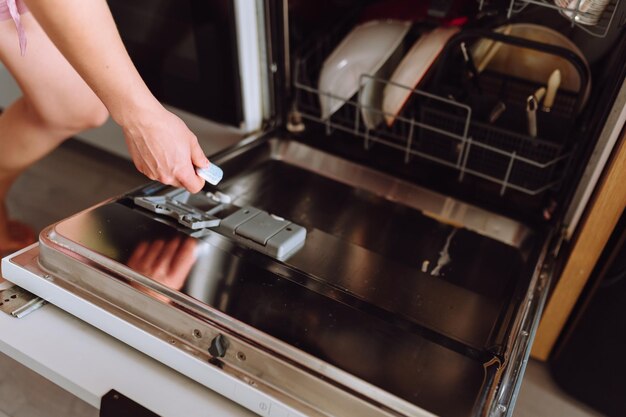Say Goodbye to Rust: Keeping Your Stainless Steel Fridge Spotless
Owning a stainless steel refrigerator adds a sleek, modern charm to any kitchen, but maintaining its shiny appearance can be challenging. Rust spots, despite stainless steel's resistance, can appear and mar the surface. If you're dealing with pesky rust on your fridge, worry not. This guide will walk you through practical steps to restore your appliance to its original luster while ensuring your kitchen setup doesn't miss a beat.
Why Does Rust Appear on Stainless Steel?
Stainless Steel's Myth: While labeled 'stainless', these steel appliances can sometimes face rust issues. This metal is an alloy containing chromium, which forms a thin oxide layer that makes it resistant to corrosion. However, when this protective layer is breached—often via scratches or exposure to harsh chemicals—rust can start to form.
Common Causes of Rust
- Scratches and Damage: Everyday use, collisions with sharp objects, or abrasive cleaning tools can scratch this protective coating.
- Moisture and Humidity: High humidity environments exacerbate rust formation as moisture accumulates on surfaces.
- Use of Harsh Chemicals: Certain cleaning agents and bleach can damage the chromium layer, inviting rust.
Step-by-Step Guide to Remove Rust
Let's explore how you can effectively and safely get rid of rust spots on your stainless steel refrigerator.
Safety First: Gather Your Supplies
Before starting, gather the necessary supplies. You'll need:
- Soft cloths or microfiber towels
- A bowl for mixing
- Baking soda
- White vinegar
- Non-abrasive cleaner or stainless steel cleaner
- Olive oil or mineral oil
- Gloves (optional, to protect hands)
Method 1: Baking Soda Paste
Step 1: Mix the Paste
- Combine about one tablespoon of baking soda with two tablespoons of water. Stir to form a paste.
Step 2: Apply and Rub Gently
- With a soft cloth, apply the paste to the rusted area. Gently rub in the direction of the grain of the stainless steel to prevent new scratches.
Step 3: Wipe and Rinse
- Let sit for 5-10 minutes. Then rinse with water and wipe with a dry cloth.
Method 2: Vinegar Solution
Step 1: Soak with Vinegar
- Soak a soft cloth or cotton ball in white vinegar. Apply to the rust spots, ensuring they are well-soaked.
Step 2: Wipe and Buff
- Allow the vinegar to sit for a few minutes. After this, wipe in the grain direction of the stainless steel. This naturally breaks down rust.
Step 3: Dry the Surface
- Rinse thoroughly with water and dry with a clean cloth to prevent any watermarks.
Method 3: Specialty Cleaners
For tough rust spots, considered using non-abrasive commercial stainless steel cleaners. These are formulated specifically for challenging spots and often restore the shine.
Step 1: Apply Cleaner
- Follow instructions on the cleaner label. Usually, this involves applying the cleaner directly to the rust patches.
Step 2: Buff Out Rust
- With a microfiber cloth, buff the cleaner into the surface, following the grain.
Step 3: Clean Off Residue
- Rinse surfaces thoroughly to remove any residue of the cleaner, then dry immediately.
Preventive Tips for Avoiding Rust Reformation
As the old saying goes, prevention is better than cure. Once your refrigerator is gleaming again, you'll want to maintain and protect it.
Regular Cleaning and Maintenance
- Regular Dusting: Use a soft cloth regularly to dust the surface, preventing moisture and debris accumulation.
- Avoid Harsh Cleaners: Stick to mild cleaners designed for stainless steel.
- Use Soft Tools: Only use non-abrasive tools to avoid damaging the protective layer.
Ensure Optimal Conditions
- Control Humidity: Aim for a well-ventilated area around your fridge. If it faces high humidity constantly, consider a dehumidifier.
- Check Water Lines: Ensure no leaks may contribute to rust. If your fridge has a water dispenser, verify hoses and connections are dry.
Routine Checks
- Inspect Regularly: Examine your refrigerator's surface for any signs of rust or damage, enabling early intervention.
- Oil Polish: Apply a small amount of mineral or olive oil and wipe it across the surface occasionally. This adds shine and a protective coat against moisture.
Visual Summary: Key Tips to Keep in Mind
Here’s a quick visual guide to help keep your fridge rust-free!
- 🧼 Clean Gently: Always clean in the direction of the grain using soft microfiber cloths.
- 🔍 Regular Inspections: Regularly check for rust formations and intervene early to prevent spreading.
- 🌿 Use Natural Products: Opt for baking soda and vinegar for safe, natural rust treatments.
- 🛡️ Protective Coatings: Occasional oil polishing helps form a protective barrier.
- 🇨🌬️ Maintain Conditions: Control humidity levels around your appliances.
Final Insight: Embrace the Process
With proper care and maintenance, rust spots on your stainless steel refrigerator don’t have to become a recurring issue. Embrace these expert solutions and preventive measures to keep your appliance pristine, shining like new, and enhancing your kitchen's aesthetic charm. Remember, restoration is part and parcel of enjoying the luxury and allure of stainless steel in your home.
By following these steps, you can confidently handle rust issues and enjoy a spotless, stylish refrigerator. Keep it gleaming, and let it remain the crown jewel of your beautiful kitchen!
